December 2009
| American Renaissance magazine | |
|---|---|
| Vol. 20, No. 12 | December 2009 |
| CONTENTS |
|---|
Why the West Dominated
The Origins of the British People
Implicitly White, Explicitly Anti-White
O Tempora, O Mores!
Letters
| COVER STORY |
|---|
Why the West Dominated
The traits that shaped Europeans.
The purpose of this article is to continue the discussion that was begun by Robert Henderson’s insightful and important article, “Why Have Asians Not Dominated?” which appeared in the October 2009 issue of American Renaissance. I will first demonstrate the little known but vitally important fact that by 1600 Europe was already far ahead of China in science, mathematics, and technology. Then I will propose a crucial cause of Western pre-eminence.
To illustrate the first point I will use what is arguably the most important single source for differences in achievement and culture between Europe and China: the diaries and reports that the Italian Jesuit missionary Matteo Ricci wrote about his experiences in China from 1583 until his death in 1610. An edited version was published in 1615, and an English translation was published in 1953 with the title China in the 16th Century: The Journals of Matthew Ricci, 1583-1610. Wherever Father Ricci’s account can be checked against Chinese sources, it has been found to be accurate. Sinologists recognize it as an invaluable historical source.
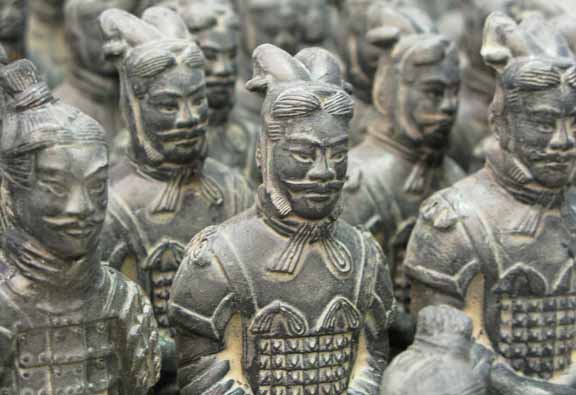
Soldiers from the Terracotta Army
One of the most striking aspects of Ricci’s experiences in China was that wherever he went, he was accorded the highest honors, including being welcomed into the Forbidden City of Beijing. This is remarkable because, as Ricci recorded:
The Chinese look upon all foreigners as illiterate and barbarous … They even disdain to learn anything from the books of outsiders because they believe that all true science and knowledge belongs to them alone. If perchance they have occasion to make mention of externs [foreigners] in their own writings, they treat them as though there was no room for doubt that they differ but little from the beasts of the field and of the forest. Even the written characters by which they express the word foreigner are those that are applied to beasts. (pages 88-9)
He added:
The Chinese are so self-opinionated that they cannot be made to believe that the day will ever come when they will learn anything from foreigners which is not already set down in their own books.” (page 142)
Nevertheless, Ricci was treated with the highest respect. The reason was that Chinese officials, scholars, and common people were struck with awe by his demonstrations of European geographical and astronomical knowledge, theoretical and applied mathematics, and technology.
Wherever Ricci went, his maps and globes aroused amazement. In Nanjing, the president of the magistrates “took great pleasure in studying” a map of the world, “wondering that he could see the great expanse of the world depicted on such a small surface.” (pages 301-2) In Beijing, the emperor had twelve copies made in silk on large panels of a map of the world that Ricci had drawn, so that he could give them to his sons and other relatives. (page 536)
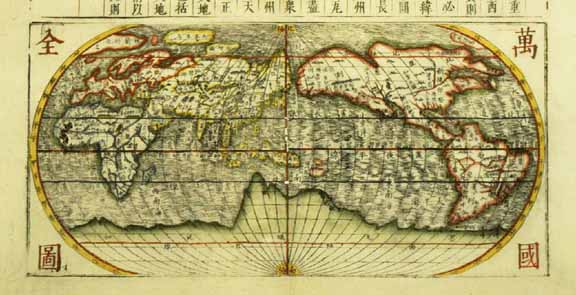
Father Ricci’s map
These maps caused such excitement because, as Ricci explained, before he arrived, “the Chinese had never seen a geographical exposition of the entire surface of the earth, either in the form of a globe or as presented on the plane surface of a map, nor had they seen the earth’s surface divided by meridians, parallels or degrees.” (page 326)
[T]he Chinese . . . are grossly ignorant of what the world in general is like … [T]heir universe was limited to their own fifteen provinces, and in the sea painted around it they had placed a few little islands to which they had given the names of different kingdoms they had heard of. All of these islands put together would not be as large as the smallest of the Chinese provinces.” (pages 166-7)
“Formerly, they had thought that … the earth is flat. They did not know that the whole surface of the earth is inhabited or that men can live on the opposite side without falling off. (page 325)
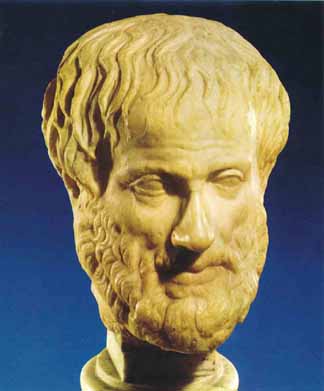
Aristotle was 2,000 years ahead of the Chinese.
The Chinese were just as astonished by European theoretical mathematics and astronomy. Ricci had studied these subjects under Christopher Clavius, the German Jesuit who was one of the foremost mathematicians of the age and was responsible for the Gregorian calendar, which is now used in all non-Muslim countries.
Aristotle had explained the rules of logical deduction nearly two thousand years earlier. However, Ricci noted that the Chinese “have no conception of the rules of logic.” (page 30) Ricci and a Chinese Christian convert therefore translated the first six books of Euclid’s Elements (of geometry) into Mandarin:
[N]othing pleased the Chinese as much as the Elements of Euclid. This was perhaps due to … the Chinese … method of teaching, in which they propose all kinds of propositions but without demonstrations. The result of such a system is that anyone is free to exercise his wildest imagination relative to mathematics, without offering a definite proof of anything. In Euclid, on the contrary, they recognize something different, namely, propositions presented in order and so definitely proven that even the most obstinate could not deny them. (pages 476-7)
As for astronomy, Ricci recorded that the Chinese “did not realize that an eclipse of the moon was caused by the earth coming between the moon and the sun … It was new to them to learn that the sun was larger than the entire earth.” (pages 325, 327)
More significantly:
Their count of the stars outnumbers the calculations of our astronomers by fully four hundred . . . And yet with all this, the Chinese astronomers take no pains whatever to reduce the phenomena of celestial bodies to the discipline of mathematics … [T]hey center their whole attention on that phase of astronomy which our scientists term astrology. (pages 30-31)

The Prague astronomical clock, built in the 15th Century, is still running.
Elsewhere Father Ricci observed, “Their primitive science of astronomy knew nothing of eccentric orbits and epicycles.” (page 326) So he made “astronomical spheres and globes … illustrating the heavens … When these various devices were exhibited and their purpose explained, showing the position of the sun, the courses of the stars and the central position of the earth,” Ricci “was looked upon as the world’s greatest astronomer.” (page 169)
Ricci still assumed that the earth is in the center of the universe. His knowledge of astronomy had not advanced beyond the ancient Greeks, who were the first people who tried to explain the motion of the heavenly bodies. To do that, they hypothesized orbits. But they thought that the earth is in the center of the universe, and to make these orbits correspond to observed celestial movements, they had to make them off-center (“eccentric”), and to hypothesize smaller orbits (“epicycles”) that revolved in the larger orbits. That is what Ricci demonstrated to the Chinese. The Chinese were amazed because they had never attempted to explain the movements of heavenly bodies.
It was because Europeans kept trying to conceptualize the movements of heavenly objects that the ancient Greeks created a geocentric model; then Copernicus, dissatisfied with its awkwardness and inconsistencies, revised it; Kepler improved Copernicus’ revision; and Newton figured out the universal laws that explain Kepler’s improved version.
The eminent physicist Stephen Hawking wrote in A Briefer History of Time that “ever since the dawn of civilization, people have not been content to see events as unconnected and inexplicable. We have craved an understanding of the underlying order in the world.” (page 18) He is wrong. That craving began with the ancient Greeks and has existed only in European culture and those cultures influenced by the West.
By 1600, European technology and applied mathematics were also already vastly superior to those of China. Ricci wrote that a clock “was an object of wonder.” (page 201) The Chinese were amazed not only by the fact that clocks told time, but also that they rang a bell at each hour. Ricci noted that “they could never quite make out how it could ring of itself, without anyone touching it.” (page 194)
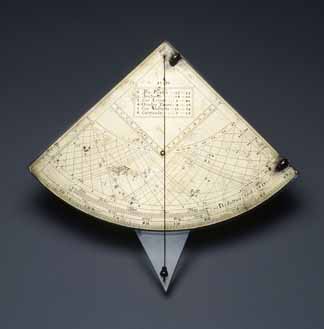
Quadrants were unknown to the Chinese.
Clocks were hardly the only European invention that dazzled the Chinese. One of the many that Ricci mentions was the use of quadrants with limbs graduated in degrees to measure distances. “They marveled that one could figure the height of a tower, the depth of a ditch or of a valley, or the length of a road by means of quadrants,” Ricci noted. (page 326) In Nanjing, he let the public view the presents he was bringing to the emperor: “[V]isitors came in crowds to see them. The novelty of the gifts surpassed their expectations to such an extent that astonishment robbed many of their power to praise them, and they seemed never to tire of examining them and of talking about them.” (page 348)
Ricci also noted that the Chinese calendar was inaccurate and that although Chinese astronomers spent a great deal of time trying to predict eclipses, they made “innumerable errors.” (page 31) After Ricci’s death, in 1629, the emperor’s astronomers predicted that a solar eclipse would occur at 10:30 on June 21 and last two hours. The Jesuits predicted that the eclipse would be at 11:30 and last only two minutes. The Jesuits’ prediction was accurate. As a result, the emperor asked the Jesuits to revise the Chinese calendar.
Among the other innovations the Jesuits introduced into China in the 16th and 17th centuries were the Archimedes screw pump (a cylinder enclosing a screw used to lift water for irrigation), algebraic notation, the telescope, logarithm tables, the slide rule, and such European tools for making instruments as graduated scales and micrometer screws.
Europeans and Multiculturalism

Roman sewer.
I will quote one more of Father Ricci’s observations:
When they [the Chinese] set about building, they seem to gauge things by the span of a human life . . . Whereas, Europeans in accordance with the urge of their civilization seem to strive for the eternal. This trait of theirs [the Chinese] makes it impossible for them … to give credence … when we tell them that many of our buildings have withstood the elements for … a hundred years and some even for one or two thousand years … [T]hey do not dig into the ground to build up foundations, but merely place large stones on the unbroken surface of the ground; or, if they do dig foundations, these do not go deeper than a yard or two … [M]ost of their buildings are constructed of wood, or if made in masonry they are covered in by roofs supported by wooden columns. (pages 19-20)
It is typical of Ricci’s objectivity that he refers to Europeans in the third person: “Europeans in accordance with the urge of their civilization.”
Ricci also translated the Confucian Four Books into Latin because “it is no use at all to know only our learning without knowing theirs;” and, with another Italian Jesuit, compiled a Portuguese-Mandarin dictionary, for which they developed the first consistent system for transcribing Chinese words in the Latin alphabet. Father Ricci’s interest in other civilizations, his objectivity when describing them, and his desire to acquaint other Europeans with them have always been fundamental and unique characteristics of Western civilization.
From the beginning of European civilization, with the ancient Greeks, Europeans have been multiculturalists; and Europeans have been the world’s only multiculturalists. The first extant European history was written by Herodotus in the fifth century BC. The Greek word historia meant investigation, and Herodotus’ historia is as much what we call anthropology as history. He recorded and analyzed what he learned during his travels throughout Egypt, as far east as modern Iran, and along the coast of the Black Sea. He was fascinated by the diversity of human cultures and expected his readers to be fascinated. He was also rigorously non-judgmental, emphasizing that custom determines what people think is right and wrong; as he wrote in Book 3, Chapter 38, “custom is king.”
Ancient Greek literature reflected the same attitude to non-Greeks, beginning with the first extant work of European literature, the Iliad, which Homer composed in the eighth century BC. The Iliad narrates events in the tenth year of the Greek siege of Troy. Homer showed as much sympathy for the Trojans as for the Greeks. In particular, he portrayed the leading Trojan warrior, Hector, in a loving interaction with his wife and son, as well as the agony of Hector’s bereaved parents after he was killed by the leading Greek warrior, Achilles. Such sympathy is uniquely European. Surely, it never occurred to the author of the First Book of Samuel to depict the grief of Goliath’s parents after David killed him.
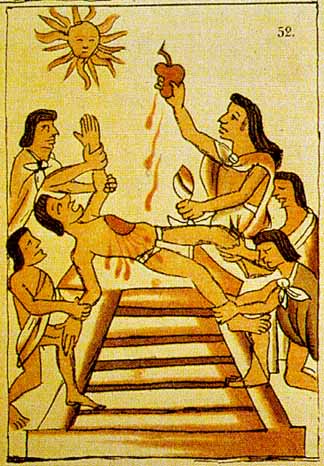
A sign of “surpassing religiosity?”
Sympathy often became self-flagellation. In the fifth century BC, Euripides wrote two plays — Hecuba and Trojan Women — in which he depicted the Greeks’ savage cruelty to the defenseless Trojan women and children after the capture of Troy. (All plays in Athens were performed before mass audiences.) The brutality of the Greeks to the defeated, defenseless Trojans was also a favorite subject of ancient Greek vase painting. By contrast, the narrative sculpture of the Assyrians, who dominated the Middle East from the ninth to the end of the seventh century BC, represented defeated enemies with pyramids of stacked-up skulls, communicating no feeling except triumph.
The ancient Romans had the same fascination with foreign cultures as the Greeks. Examples are Julius Caesar’s description of the Gauls in his Gallic War; Sallust’s of the peoples of North Africa in his Jugurtha; and Tacitus’ of the Germans and natives of Britain in his Germania and Agricola. No other ancient people had such an interest. When the ancient Egyptians mentioned other nationalities, they nearly always attached adjectives like “vile” and “lowly” to their names.
The Romans also shared the Greeks’ penchant for self-denigration. The Roman Empire extended from Scotland to the Sahara Desert and from the Atlantic Ocean to the border of what is now Iraq. The population of that huge area enjoyed unprecedented peace and prosperity. To take two examples, literacy was so widespread that most orders and regulations in the Roman army were written, because all soldiers were literate; and the cities and towns of the Roman Empire had purer water and more efficient sewage disposal than any European city was to have again until the 1870s. Large areas of North Africa and the Middle East still have not recovered the level of literacy or of sanitation that they had when they were part of the Roman Empire. Also, contrary to Hollywood depictions, slaves never rowed ships in the ancient world, and slavery played only a minor role in the Roman economy. Nevertheless, the Romans dwelt obsessively on every injustice and brutality that they committed in their history. (When I would point that out to my South African students, at least a few would always observe, “So they were like Americans.”)
One way in which the Romans denigrated themselves was through the ethnographic descriptions of foreign cultures that I mentioned. These served two purposes. One was to provide information, which was usually accurate. But their authors also used them to cast a harshly negative light on their own, Roman, civilization.

Hollywood version of Chief Seattle.
Nearly every Roman who wrote a description of a foreign people created at least one vitriolic anti-Roman speech and put it into the mouth of an enemy of Rome. The best known is in Chapters 30-32 of Tacitus’ Agricola: The Romans are “robbers of the earth … They apply the fraudulent name empire to plunder, slaughter, and theft; where they create a desert, they call it peace.”
Another way in which the Romans used ethnographic descriptions to castigate themselves was with comparisons between the (usually imagined) virtues of other peoples and their own (greatly exaggerated) vices. The best known is in chapters 18-19 of Tacitus’ Germania, in which he contrasted the Germans’ marital fidelity with the casual attitude towards adultery of Roman society. Among the Germans, “no one laughs at vice; nor is seducing and being seduced called the spirit of the age.” I would add that Tacitus was not just the greatest ancient Roman historian; he was a senator, who held many high positions, including governor of what is now western Turkey.
Europeans have ever since used other cultures, especially primitive cultures (or even talking horses, as in Swift’s Gulliver’s Travels), to criticize themselves. Most readers of this article can think of many examples; I will provide only three. Michel de Montaigne (1533-1592) was as erudite, intellectually sophisticated, and skeptical a man as ever lived. His motto was Que sçais-je? (What do I know?) Yet, in his essay Des cannibales (“On Cannibals”), he wrote that the natives of Brazil retain their “vigorous” “natural virtues” and “pure and simple” “naturalness” because they have been “very little corrupted” by contact with the vanity and frivolity of Europeans. The natives of Brazil “surpass … the conceptions and the very desire of philosophy … The words that signify lying, treachery, dissimulation, avarice, envy, belittling, pardon are unheard of [among them].”
Europeans have been so desperate to show the superiority of primitive peoples over themselves that they have even praised human sacrifice. That includes a Catholic priest. Father Bartolomé de Las Casas (1484-1566) wrote in his Apologia that the Aztecs “surpassed all other nations in religiosity, because the most religious nations are those that offer their own children in sacrifice for the good of their people.” He explained that “one could argue convincingly, on the basis of God ordering Abraham to sacrifice his only son, Isaac, that God does not entirely hate human sacrifice.” (In fact, one of the main purposes of the story of the sacrifice of Isaac is to show that God does not want human sacrifice. Las Casas must have known that the Old Testament repeatedly and vehemently condemns human sacrifice.)

Muslims were astonished that Europeans had translated the Koran.
My third example is more recent. In Earth in the Balance: Ecology and the Human Spirit (1992), ex-vice president and anti-global-warming crusader Albert Gore quoted (page 259) as an ecological ideal the reply of Chief Seattle to President Pierce’s offer in 1855 to buy his tribe’s land, “How can you buy or sell the sky? The land? The idea is strange to us … Every part of the earth is sacred to my people … [T]he earth does not belong to man, man belongs to the earth.” Gore describes this speech as “one of the most moving and frequently quoted explanations” of American Indians’ attitude to the environment.
It has, indeed, been frequently quoted, but only since 1971, when screenwriter Ted Perry wrote it for an ABC television drama. The real Chief Seattle, who owned slaves and murdered nearly all his rivals, praised President Pierce for the generosity of his offer. The American Indians, like all primitive peoples, slaughtered animals and destroyed vegetation with wanton recklessness.
In addition to a strong propensity to self-denigration, modern Europeans also share with the ancient Greeks and Romans a powerful desire to learn as much as they can about other civilizations. From the time of the Arab conquest of the Middle East and North Africa, Europeans studied Arabic and tried to learn about the Arabs. Pope Clement V (1305-14) urged universities to establish chairs in Arabic. Permanent chairs in Arabic were established at the Collège de France in 1538, the University of Leiden before the end of the sixteenth century, Cambridge in 1632, and Oxford in 1636.
Edward Gibbon recorded in his Autobiography (page 79 of the edition by D. A. Saunders) that when he entered Oxford in 1752, he considered studying Arabic because “Oriental [i.e., Middle Eastern] learning has always been the pride of Oxford.” Well before that, Europeans had written many grammars and dictionaries of Arabic, Persian, and Turkish; translations and editions of Muslim books; and analyses of Muslim literature and religion. In fact, the first book printed by a printing press in England (1477), Dictes [sic] and Sayings of the Philosophers, was an English version of an Arabic book by Mubashir Ibn Fatik. By 1603, 49 books on the Turks had been published in English. Of all the books published in France between 1480 and 1700, more than twice as many were about the Turkish Empire as about North and South America. It was Europeans and Americans who deciphered the ancient languages of Egypt, Persia, and Mesopotamia and reconstructed their ancient histories.
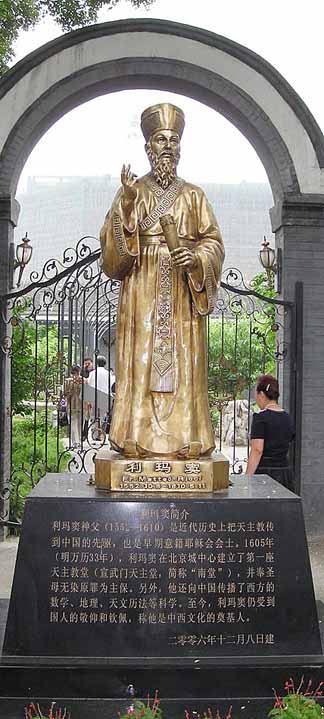
Statue of Fr. Ricci in Peking.
This fascination with foreign cultures is uniquely Western. The Chinese attitude to foreigners, which Father Ricci described, has characterized all non-Western societies. The Arabs ruled much of the Iberian Peninsula for nearly 800 years; the Turks ruled most of southeastern Europe for nearly 500 years. But neither the Arabs nor Turks had any interest in learning European languages. They used European converts to Islam as interpreters.
An excellent illustration of this parochialism is the most eminent Muslim historian of the late seventeenth and early eighteenth century, the Turk, Mustafa Naima (1665-1716), who lived most of his life in Istanbul. Naima was unusually objective, inquisitive, and open-minded for a Muslim historian. He was judicious and critical in his use of sources. Historians still rely on his major work, which was translated in 1832 with the title Annals of the Turkish Empire from 1591-1659 of the Christian Era.
However, Naima knew nothing about Europe. In the preface to his Annals, he saw nothing incongruous about comparing Europe of the time he was writing (1704) with Europe of the Crusaders. Both had many Germans and both had an emperor! (pages ix-x) Naima was a contemporary of Newton, Leibnitz, Leeuwenhoek, and Locke. Yet, after listing now totally forgotten Turkish religious scholars, he wrote, “This much is sufficient to awaken the envy of the Christians.” (page ix)
The French conquest and occupation of Egypt between 1798 and 1801 forced a few Egyptian Muslims to take Europeans seriously. Fortunately, one of them, Abdul Al-Jabarti, wrote detailed observations about the French in Egypt. An English translation has been published with the title Napoleon in Egypt: Al-Jabarti’s Chronicle of the French Occupation (expanded edition, 2004). Al-Jabarti criticized the French Republic’s hostility to Christianity and the granting of equal rights to Egyptian Christians and Jews. (pages 28, 32, 189-90) But he praised the French for their humane treatment of the Egyptians they employed in public works, to whom they paid wages, instead of conscripting them and driving them with whips, as Egyptian governments had done. (page 195) He also expressed wonder and amazement at European science and technology (pages 110, 195) and at the fact that “the glorious Qur’an is translated into their language! Also many other Islamic books … many verses of which they know by heart. They … make great efforts to learn the Arabic language … In this they strive day and night.” (page 110)
So, an obsession with self-criticism and a passion to learn as much as possible about other civilizations have been among the unique and fundamental characteristics of Western civilization since its beginning. These characteristics have undoubtedly contributed to another characteristic that is as uniquely and fundamentally Western: ceaseless, incessant change, adaptation, and improvement. This characteristic must be a basic cause of the West’s rise to world predominance, even over Orientals, despite their somewhat higher average intelligence.
To illustrate the importance of these characteristics, I will return again to Father Ricci’s diaries. He noted that the best Chinese paper was vastly inferior to European paper. “It cannot be written or printed on both sides … Moreover, it tears easily and does not stand up well against time.” (page 16) Yet, the Chinese invented paper centuries before it was used in Europe. In 1620, Francis Bacon observed in Book I, Chapter 129 of his Novum Organum (New Instrument) that printing, gunpowder, and the compass “have changed the whole face and state of things throughout the world … no empire, no sect, no star seems to have exerted greater power and influence in human affairs than these mechanical discoveries.” All three were invented in China centuries before Europeans began using them, but only Europeans developed them and applied them to transform their society and then the entire world. Ricci observed that “the Chinese are not expert in the use of guns and artillery and make but little use of them in war.” (page 18) By Ricci’s time, Europeans had used the compass to explore and map the entire world, while the Chinese thought that the world consisted of China and a few small off-shore islands.

Of these inventions, printing is obviously the most valuable. By 1500, less than fifty years after Gutenberg printed the first book with interchangeable metallic type, 236 European cities and towns had printing presses, and Europeans had printed 30,000 titles — about 20 million books in total — in more than a dozen languages. (By 1483, printing type had been cast in the Cyrillic alphabet and in Greek by 1501.) The Spanish had set up printing presses in Latin America by 1533 and the Portuguese in their colony of Goa, in India, by 1557. By 1600, when the population of Europe was approximately 100 million, between 140 and 200 million books had been printed. By 1605, newspapers had appeared, at first specializing in business news.
Everywhere else in the world, nearly all books continued to be copied by hand into the 19th century. The first printing press in the Muslim world was established in Istanbul in 1727, by a Hungarian convert to Islam, who employed a Jew as master printer. By 1815, 63 titles (an average of fewer than one a year) were printed in Istanbul, the intellectual center of the Muslim world; and most of these titles were printed in quantities of less than a thousand copies. The first printing press in Egypt was established by the French, when they occupied it in 1798. By contrast, the Qur’an in Arabic was printed in Venice in 1530, nearly two centuries before any book was printed in the Muslim world.
To anyone reared in the West, the indifference of the entire non-Western world to such a spectacularly useful innovation as printing seems amazing. The reason for this indifference is that all non-Western cultures have had the same attitude of smug self-congratulation and disdain for foreigners as Father Ricci noted among the Chinese.
The self-criticism and fascination with other civilizations that have characterized Western civilization from its beginning have been a crucial factor in its rise to predominance.
However, self-criticism and fascination with other civilizations could be positive forces only while large population movements between civilizations did not occur. When large numbers of non-Westerners began to flow into Western countries, these same factors became suicidal. Aristotle observed that there are two types of vices: those that derive from a vicious nature and those that are the excesses of virtues.
Dr. Farron is retired as a professor of classics at the University of the Witwatersrand in Johannesburg. He is the author of The Affirmative Action Hoax, which was reviewed in AR in January 2006.
| BOOK REVIEW |
|---|
The Origins of the British People
Whence came the Saxons, Celts, Gaels, and Picts?
Bryan Sykes, Saxons, Vikings, Celts: The Genetic Roots of Britain and Ireland, W.W. Norton, 2006, 364 pp., $26.95.
Heretofore, our knowledge of the ancient migrations of peoples has been based on myth, the accounts of ancient historians, and archaeology. That was never much to go on, and an age of rationality has rejected all but the last. Science has now provided us with a new window into the pre-historic past — DNA — and it shows that ancient myths are not altogether fanciful, and that the musings of ancient historians about what happened before their time are often close to what really did happen.
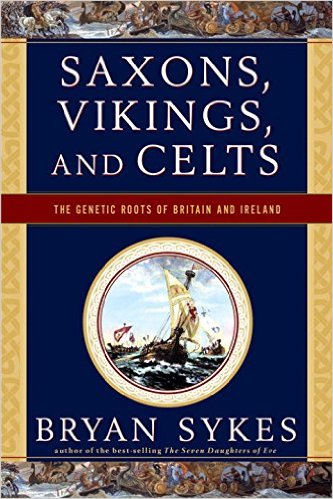
From extensive sampling of mitochondrial DNA (mtDNA) — which is passed on essentially intact from mother to daughter — we now know that 95 percent of native, white Europeans belong to one of seven maternal clans, all but one of which originated in Europe. Bryan Sykes, professor of molecular biology at Oxford University, described these clans in his 2001 bestseller, The Seven Daughters of Eve. The oldest, which he named Ursula, is 45,000 years old, and originated in Greece. Other maternal clans came from the Caucasus mountains and Spain, and two originated in northern Italy. The group Professor Sykes named Helena is 20,000 years old and came from the South of France — nearly 47 percent of Europeans are descended from her group. The youngest maternal clan, named Jasmine, is the only one with a non-European origin. It is about 10,000 years old and can be traced to northern Syria.
In his most recent book, Professor Sykes focuses on his own country of Britain, as well as Ireland, and his conclusions are striking. Long-held notions about the origins of the peoples of the British and Gaelic Isles will have to be considerably revised, but not thrown out. Although a scientist and geneticist, Prof. Sykes has great respect for historical myths because he has frequently found that the science of genes often backs them up, and finds them “closer to the genetic conclusions than the often ambiguous evidence of archaeology.”
Prof. Syke’s research began in 1996 as part of the Oxford Genetic Atlas Project, which he directed. With the help of assistants, he travelled over 80,000 miles and collected some 10,000 DNA samples. He was also able to draw on 25,000 genetic samples from customers of his company, Oxford Ancestors, 6,000 more received by mail from volunteers across the Isles, and nearly another 9,000 from colleagues doing similar work. His results were published in England in 2006 under the title, Blood of the Isles. The book has been given a new title for the American market, and it is unclear if the change was for marketing purposes, or because of political correctness.
Prof. Sykes found that on their maternal side, most Britons are Celts, and their maternal ancestors have been living on the island from 8,000 to 10,000 years. “We are an ancient people,” he writes, and “the matrilineal history of the Isles is . . . continuous.” Later invaders (Anglo-Saxon, Norse/Danish) have left a genetic imprint, but not nearly enough to displace what Prof. Sykes calls the island’s core “Celtic/Pictish stock.” (The Picts were the earliest known inhabitants of Scotland, or Caledonia as the Romans called it.) This means the Saxons and Norsemen did not exterminate or drive out the native Britons, as was once thought, but moved in among them and intermarried. The Saxons brought some women with them to such areas as East Anglia, and the Norsemen brought women to the Scottish Isles, but the maternal ancestry of Britons is overwhelmingly Celtic.
There were movements in the opposite direction. It has long been believed that the Norse who settled Iceland brought with them Gaelic/Celtic women from Ireland and Scotland, as well as a number of men. The DNA confirms this. Two-thirds of Icelandic women have Celtic genes, as do one third of the men. The Icelanders are therefore a Celto-Nordic people.
According to myth, the Celtic tribes migrated en masse to Britain and Ireland several hundred years before the Roman invasion, but Prof. Sykes finds no genetic evidence for this. The Celtic-speaking Britons were descended from the original settlers who moved north about 10,000 years ago, when Britain was still connected to the continent, as the glaciers retreated and temperatures moderated at the end of the last Ice Age.
The native or non-Germanic DNA of Scotland is not dissimilar to that found in Ireland, Wales, or Cornwall. Thus, both linguistics and genetics agree that the Picts of ancient Caledonia were not a separate people from the Britons to the south, or the Gaels to the west, and were thus a kindred people to the Celts. They might, moreover, have been the first people to arrive in Britain. Thus, the builders of Stonehenge and other magnificent megalithic structures, such as the Callanish Standing Stones and the stone village of Skara Brae on Orkney, could only have been the ancestors of the Picts, and not some mysterious people who vanished long-ago, as was once thought. The Celts appear to have been the original inhabitants of Western and Central Europe.
Germans who invaded Britain in the sixth and seventh centuries were Angles, Saxons, or Jutes. The Vikings who invaded three centuries later were either Norwegian or Danish. The genes of these invading tribes are so similar that Prof. Sykes cannot tell them apart, but he can distinguish them from the native Celts. Here again, both linguistic and genetic evidence agree: the kindred Celtic and Germanic peoples separated tens of thousands of years ago, and moved to Europe in two separate waves, with the Celts arriving in Britain some nine to ten thousand years before the Germanic people.
Prof. Sykes finds Scandinavian/Germanic male DNA to be highest in the islands to the north and west of Scotland, where it accounts for 42 percent of the DNA in the Shetlands, 37 percent in the Orkneys, 29 percent in the Hebrides, and 24 percent in Scotland overall. It is 20 percent of the DNA in the east of England (the Saxon/Danish kingdom of East Anglia), 10 percent in the south (the old Saxon kingdom of Wessex), and 15 percent overall north of the Danelaw (the ninth-century line separating Danish-ruled from Saxon-controlled England, which ran roughly from London to Liverpool). Not surprisingly, as Wales remained outside the areas of Saxon or Danish rule for centuries, little Germanic DNA is found there.
It is possible to find in Prof. Sykes’ data tables evidence for a somewhat higher Germanic/Scandinavian male genetic imprint, rising to 32 percent in the Viking north, 33 percent in East Anglia, 39 percent in the Saxon/Norman south, as low as 12 percent in Wales, and up to 17 percent in southwestern England. Thus, the long-held belief, or as some would say, myth, that the English were Germanic, the North English Scandinavian, and the Welsh and Cornish Celtic, even if exaggerated, appears to be grounded in fact.
Like mitochondrial DNA in women, the Y chromosome is passed essentially unchanged from father to son and has been traced back to paternal clans. One given the name Oisin is clearly Celtic. The Oisin Y is found everywhere in the Isles, but its highest concentrations are in areas where there was little German or Viking settlement. In the west of Ireland, it is found in over 95 percent of men and in Wales in 83 percent. In Anglo-Saxon/Danish East Anglia only 51 percent of males have it. Prof. Sykes’ sampling in Norway indicates that 44 percent of men are descended from the Wodan clan, and 22 percent are Sigurds. These are the second and third most numerous male clans in Britain, and are most common north of the Danelaw and in the Viking-settled areas of Scotland.
Although Romans occupied the southern two thirds of Britain for nearly 400 years, Prof. Sykes notes that “true Roman genes are very rare in the Isles,” and those few are scattered across the southern third of the island. That means there could not have been a significant movement of Roman settlers to Brittania, and also that the occupying Roman legionnaires must have been predominantly Celtic and Germanic recruits from north of the Alps. After the early first century AD, Roman legions were increasingly filled with non-Italians.
Finally, what of the Norman Conquest? Prof. Sykes cannot determine their genetic contribution because the French-speaking Normans were actually Viking in ethnic origin, making them genetically indistinguishable from the Saxons and Danes.
If all this is true, how does one explain the presence of black hair and brown eyes in the Isles? These traits are not Celtic or Germanic, but have long been present. In the last century, John Beddoe, a Bristol physician and ethnologist, travelled the length and breadth of the British Isles, recording the physical characteristics of the inhabitants. All together he made 43,000 detailed observations in 472 different locations. He found that dark hair and brown eyes were fairly common in western Ireland, Wales, Cornwall, and to a lesser extent the Scottish Hebrides, but very uncommon everywhere else. His book was titled The Races of Britain (1885).
There is an ancient Irish myth that their island was first settled by a people from Spain, and an English/Welsh myth that Brutus led a band of Trojans from Italy to Britain. Prof. Sykes found that there may be a core of truth to both these myths. He was able to trace the movements of the Jasmines (the youngest of the Seven Daughters and presumably dark haired because of their Near Eastern origin) along the northern coast of the Mediterranean Sea to Spain and thence to Ireland and the western reaches of Britain about 6,000 years ago. Another branch of the same clan moved across the central valleys of Europe to Britain. Today Jasmines make up about 13 percent of the mitochondrial DNA in Scotland, 12 percent in England, and 9 percent in Wales. Surprisingly, Prof. Sykes does not tell us the percentage for Ireland.
One of the northern Italian maternal clans, the Tarans, also arrived about 6,000 years ago, and this could be the source of the myth of Brutus. Prof. Sykes believes these two clans introduced farming into the Isles.
The Jasmines were not Semites, but would have been ethnically similar to the ancient Iberians of Spain — Penelope Cruz might be a particularly fetching example — and the Pelasgians of ancient Athens. Prof. Sykes finds no archaeological evidence for armed invasion, and believes their relations with the Gaels, Picts, and Britons was cooperative. And yet, if that were so, it is odd that there is no Jasmine male DNA present in Britain today. Could the Celts have made war on the Jasmines and spared only the women?
In any case, the arrival by sea of the Mediterranean Jasmines would account not only for the presence of black hair among an otherwise Celtic and Germanic people, but would also explain the heretofore unanswered question of why Druids were found only among the Celts of Britain and Gaul and not among the Celts of other parts of Europe. The French classicist Simone Weil believed that the Druidic religion was of Iberian origin. If that is true, the arrival of the Jasmines could explain how it got to Britain.
Diversity?
We hear it said constantly — not as an argument requiring evidence but as a dogmatic assertion requiring mental submission — that racial/cultural/religious diversity is the source of all things good: art and science, creativity and energy, wealth and power. Britain might seem to offer historical corroboration for this multi-cultural myth. After all, there you have Celts, Germans, Vikings, Romans, and the Jasmines mixing it up on an island and eventually coming to rule much of the world. The modern Britons excelled in practically everything: politics, war, economics, science, literature, music. Surely that was due to their diversity. And surely the migration in large numbers of South Asians, East Asians, Sub-Saharan Africans, North Africans, Arabs, etcetera will mean Britain will soon rise again to her former greatness.
Of course, there is no historical or contemporary evidence that the kind of extreme diversity that now characterizes the United States, and that Britain is now approaching is the source of anything other than chaos, tension, and even civil war. What British history shows is that diversity is beneficial — if it is beneficial at all — only when it is subsumed in a larger unity. The Celts and Germans were themselves kindred races (fair haired, light complexioned, and European), and their union in what is now England was more of a re-union. The only exotic element, the Mediterranean Jasmines, were still Caucasian, and today their genes are found in only about 12 percent of Britons. Also, even this modest amount of diversity was a source of perennial warfare between England and her more Celtic borderlands, and only after centuries of no new migrations or invasions did the mixture finally produce the glories of the British Empire and its accompanying cultural achievements. It is unity that is our strength. Blind faith in the contrary is itself evidence of our decline.
H.A. Scott Trask is a freelance writer and historian from St. Louis.
| ARTICLE |
|---|
Implicitly White, Explicitly Anti-White
Betrayed by those who ought to be our friends.
In his January 2009 Atlantic cover article, “The End of White America,” Asian-American Vassar professor Hua Hsu, wrote of the few scraps whites still hold on to. He called it “a racial pride that dares not speak its name, and that defines itself through cultural cues” such as the “Blue Collar Comedy Tour, the rise of country music, and auto racing.”
Professor Kevin MacDonald of UC Long Beach coined the term “implicit whiteness” — “implicit because explicit assertions of white identity have been banned by the anti-white elites that dominate our politics and culture.” Professor MacDonald argues that this implicit pride is insufficient because it shows a lack of cultural confidence. I would go further: Many of the most implicitly white institutions — country music, NASCAR, and the Republican Party — openly push an anti-white agenda.
Rural white music
Country music could just as easily be called rural white music. With a few exceptions, virtually every country music star has been white and the fan base is even whiter. Moreover, most of the fans and the musicians are diehard Republicans. However, I appear to be the only person who has noticed that two of the current top-twenty country songs praise both Martin Luther King and Rosa Parks.
To a casual listener, Tim McGraw’s hit “Southern Voice,” with the lines “Jesus is my friend/America is my home,” sounds like an ode to old-fashioned Southern values. The song praises great representatives of the “Southern Voice:” “Hank Williams sang it,” “Jack Daniels drunk it,” etc. However, the song does not say “Robert Lee Fought for it.” Instead we learn that “Dr. King paved it,” “Rosa Parks rode it,” “Aretha Franklin sold it,” and “Michael Jordan dunked it.” To Mr. McGraw, Southerners can be proud of the blacks who undermined their institutions.
Mr. McGraw also sang a duet with a rapper named Nelly. One of Nelly’s singles is called “Pimp Juice,” in which he says that women want him only for his “pimp juice,” which he needs to let loose.
The number-four country song is Brad Paisley’s “Welcome to the Future.” He begins innocently enough by musing about how gadgets he dreamed of as a child — TVs in the backs of cars and portable video games — are now realities, but he goes downhill:
I had a friend in school
Running back of the football team
They burned a cross in his front yard
For asking out the homecoming queen
I thought about him today
And everybody who seen what he seen
From a woman on a bus
To a man with a dream
Hey, wake up Martin Luther
Hey, glory, glory, hallelujah
The music video looks like a United Colors of Benetton ad with dozens of children — presumably representing the future — saying what they want to be when they grow up. Two thirds of them are non-white or mixed-race, including a boy in a turban and a black girl saying “I’m going to be president.”
Mr. Paisley says the election of President Obama inspired him to write the song:
Invariably, someone would say: ‘Do you think the country is ready to elect a black president?’ And we’d think: ‘It would be nice, but I don’t know.’ [After the election] you just felt like the world had reached some sort of moment you will never forget in your life.
Not surprisingly, Michelle Obama chose Mr. Paisley to perform at the White House for the country-music part of her Music Series for Education.
In 2003, before the invasion of Iraq, the Dixie Chicks said President Bush made them ashamed to be from Texas. Fans boycotted the Chicks, and even ran over their CDs with a tractor. Their career never recovered. Yet a song hailing miscegenation, the most left-wing president in history, and the demographic destruction of the country becomes a chart topper without a peep.
Country songs have a reputation for conservatism. Merle Haggard’s 1969 anti-counterculture anthem, “Okie from Muskogee,” may be the best known example of a country music political statement. Mr. Haggard also recorded “Cherokee Maiden” in which he pledged his heart to an Indian, but it is less well known that he penned another pro-miscegenation ditty, “Irma Jackson.” He sang of his forbidden love with the song’s black namesake: “There’s no way the world will understand that love is color blind/ That’s why Irma Jackson can’t be mine.”
In 1970, country music executives realized this would ruin Mr. Haggard’s image, and they would not let him record the song. Mr. Paisley faces no such obstacles.
Mr. Haggard is not the only “conservative” singer who has promoted anti-white sentiment. The band Montgomery Gentry scored a hit with “You Do Your Thing, I’ll Do Mine,” which promotes the war in Iraq and school prayer. But they also recorded Kenny Chesney’s song, “Some People Change,” which praises a son overcoming his father’s racism:
His old man was a rebel yeller:
Bad boy to the bone.
He’d say: “Can’t trust that colored fella,”
He’d judge ’em by the tone of their skin.
He was raised to think like his Dad:
Narrow mind full of hate.
On the road to nowhere fast,
Till the Grace of God got in the way.
The next verse, is about a woman recovering from alcoholism — presumably a lesser disorder.
Toby Keith is another country star, whose “Courtesy of the Red, White, and Blue (The Angry American)” is considered a patriotic masterpiece and modern reincarnation of “Okie from Muskogee.” He also feuded publicly with The Dixie Chicks over their opposition to the war in Iraq. However, he played at the Live 8 festival with Tim McGraw, of “Southern Voice” fame, along with various rappers to promote African debt relief. He is also good friends with New Mexico’s pro-amnesty governor, Bill Richardson.
Country singers score hit after hit with pro-Christian and pro-war songs, but to date, no Nashville singer has recorded a song against affirmative action or illegal immigration. Occasionally, country singers praise the Confederacy, oppose gun control, or call for rough justice, but in their music videos the criminals are always white.
Hank Williams Jr.’s “If the South Would Have Won” is as close as a popular country singer has gotten to a racial message. Mr. Williams sang that if he were president of the Confederacy, “We’d put Florida on the right track, ’cause we’d take Miami back, and throw all them pushers in the slammer.” Mr. Williams wrote the song 20 years ago when he was one of the giants of the industry, so it is unclear if such a song could make it in Nashville today.
Car racing
NASCAR is even whiter than country music — despite all its efforts not to be. Every marginally successful driver is white, as are the fans. I suggest that readers go to at least one NASCAR race. Even if you do not enjoy the sport, there is much to be said for mixing with a hundred thousand fans waving Confederate flags. I can usually count the number of blacks in attendance on one hand. Of course, these blacks are treated respectfully, as opposed to how whites are treated at rap concerts.
According to columnist Steve Sailer, “NASCAR is an ethnic pride festival for the one group of people who aren’t supposed to hold ethnic pride festivals.” This pays off. Despite getting no attention from the mainstream media, NASCAR is the fastest growing professional sport in America.
Atlanta magazine interviewed race-car driver and son of a race-car driver, Dale Earnhardt Jr. — a major Republican donor — along with his friend, the rapper and actor known as Ludacris. Readers may know Ludacris for his song “Obama is Here,” which includes the lines, “Paint the White House black and I’m sure that’s got ’em terrified/McCain don’t belong in any chair unless he’s paralyzed.”
In the interview, Mr. Earnhardt bemoaned the alleged racism of his fans.
Q: It seems NASCAR needs to appeal to a younger, more diverse audience to escape some of the redneck associations.
Earnhardt: Yeah. That’s basically what I’ve been thinking about all day . . .
Q: Is racism still a factor within NASCAR?
Earnhardt: It’s still there. Ten years ago, it wasn’t really spoken. Now that NASCAR’s gotten so corporate, people are starting to ask questions.
Q: Speaking of racism, here’s another hot-button issue in the South: the Confederate flag. Thoughts?
Ludacris: It’s a no-no. They just need to get rid of it. Come with something new or just take that shit away. If they reissue it and put a big Malcolm up at the top of it, then we’re good.
Earnhardt: I feel the same way . . . anybody who is trying to show that flag is probably too ignorant to know what the hell he’s doing.
NASCAR prohibits the use of the Confederate flag in any advertisements, on cars, or on the uniforms of its employees, and discourages fans from waving the flags, though they invariably do it anyway. In 2005, Leslie Stahl interviewed NASCAR CEO Brian France on “60 Minutes,” and there is a summary of the conversation at CBS.com:
‘What are you doing to convince African Americans that this is not a good ole boy southern, Confederate-flag sport? Because that’s the image. And be honest about that,’ Stahl asked.
‘I think it’s a fading image,’ France said. ‘Well, look. I can’t — these are massive facilities. And I can’t tell people what flag to fly. I can tell you the flag we get behind. It’s the American flag.’
France would love to tell fans not to fly the Confederate flag if he could. ‘It’s not a flag I look at with anything favorable. That’s for sure.’
NASCAR, in cooperation with Dale Earnhardt Inc., spends over $4 million annually on its “Drive for Diversity” to “diversify NASCAR’s participant and audience base.” It is an affirmative action program to recruit, train, and promote women and minority drivers. “Diversity is NASCAR’s top corporate initiative,” says the company website. The push failed to find any successful minority drivers or get many blacks to show up at races. NASCAR even contributed $250,000 to Jesse Jackson’s Rainbow-Push coalition under the delusion that this would help it diversify. Fans were furious when they found out, and no more NASCAR money has gone to Jesse Jackson.
In a popular prank call circulating on the Internet, two disk jockeys pretend to be doing market research for NASCAR. They call up a fan from Mississippi and tell him that NASCAR and Dale Earnhardt Jr. plan to give his late father’s #3 car to a Kenyan driver named Lemonjello Smith who would be sponsored by a brand of African American hair products called Soul Glo. They also tell him that rappers Snoop Dog and Queen Latifiah will open up the Daytona 500. The pranksters could just as well have been real NASCAR executives.
After they provoke the NASCAR fan he finally says: “It’s NASCAR, not NASCOON . . . Every time you try to have a good time, it turns into some politically correct s**t . . . Can’t white people have one f***ing god damn thing without a bunch of f***ing god damn niggers coming in and f***ing it up? The answer is no!”
This crude language probably sums up how most fans would feel if they knew what NASCAR’s executives were trying to do.
The Stupid Party
Perhaps the most implicitly white institution is the Republican Party. After 40 years in the wilderness following the New Deal, it started pushing the Southern Strategy in the mid-1960s. This was a self-conscience appeal to both Southern whites and Northern ethnics disillusioned by the Democrats’ support for forced integration and the counterculture. The results speak for themselves. After holding the presidency for only 8 of 36 years between 1932 and 1968, they held it for 24 of the next 36 years between 1968 and 2008 — losing only when the Democrats ran white southerners.
Now the GOP apologizes for its successes. In 2005, RNC chairman and George Bush campaign manager Ken Mehlman groveled before the NAACP: “By the ’70s and into the ’80s and ’90s, the Democratic Party solidified its gains in the African American community, and we Republicans did not effectively reach out. Some Republicans gave up on winning the African American vote, looking the other way or trying to benefit politically from racial polarization. I am here today as the Republican chairman to tell you we were wrong.”
Even when it was in power, the GOP never did anything to promote white interests, particularly on the critical issue of immigration. Lance Tarrance, a Republican strategist who helped conceive of the Southern Strategy, told the Republican National Committee in 2000, “For the last three decades, we’ve had a Southern Strategy. The next goal is to move to a Hispanic Strategy for the next three decades.”
The Hispanic Strategy is failing, of course, and had the Republicans curbed immigration when they had the chance, it would not be necessary. The America that was 88 percent white when Richard Nixon became president was only 66 percent white during the election of Barack Obama. If the country’s demographics had been the same as they had been in 1976, John McCain would have won in 2008 with his 55-percent share of the white vote.
Pandering did John McCain no good. He won the same percentage of the black vote as David Duke did when he ran for governor of Louisiana. The GOP responded by making African-American Michael Steele — black and pro-affirmative action — their new chairman. He promptly told the Washington Times he wanted to give the party a “hip hop” makeover.
The new RNC website, GOP.com, drips with self-humiliation. It prominently showcases 18 “GOP Heroes” — only five of whom are white men. They include Alabama judge Frank Mims Johnson, who probably did more to establish racial quotas and force integration on whites than any other man in the state. Dwight Eisenhower is included, but his service in the Second World War is ignored. So is his belief that “these [Southerners] are not bad people. All they are concerned about is to see that their sweet little girls are not required to sit alongside some big overgrown Negroes.” His entire career is reduced to the fact that he enforced the Brown decision — which he personally opposed. In fact, except for Ronald Reagan, every accomplishment of the five white male heroes is limited to their support for blacks.
Who are some of the black “GOP Heroes?” No-name Reconstruction politicians who were elected only because the South was under occupation are portrayed as great statesmen. Self-described independent Jackie Robinson, who compared Goldwater supporters to Nazis is listed as a “Republican” hero.
GOP.com gives a time line of Republican accomplishments. Of the 28 up until 1968, only five do not involve the party’s supposedly progressive record on race and feminism.
Despite this fawning, Mr. Obama’s approval ratings among blacks are still above 90 percent while his support among whites is plummeting. This is in large part due to the racially tinged Van Jones and Henry Gates scandals. Because of increased white opposition to Mr. Obama and low black turnout, Republicans made nice electoral gains in November. They didn’t deserve them.
Making the implicit explicit
Perhaps it is a genetic defect that keeps whites from making their implicit whiteness explicit. However, with proper leadership, these three institutions could make a huge difference. If a NASCAR driver put a Confederate flag on his car despite the ban, he would instantly become a favorite. If a country-music singer sang an anti-immigration song, it would be a hit. If the Republicans woke up to reality, it would be a revolution.
In the meantime, we need to stand up to institutions that depend on our support but promote an anti-white agenda. Country music fans should save their Dixie Chicks CDs and start burning — or at least stop buying — Brad Paisley albums.
The NAACP threatened to boycott NASCAR if the Confederate flag were not banned from the stands. An NAACP boycott of NASCAR would be like a Mormon boycott of Budweiser, but if NASCAR fans stopped going to races until drivers were allowed to put battle flags on their cars, that would make a difference.
And the GOP? They have to stop taking whites for granted. Never vote for a Republican who supports racial preferences and mass immigration. In the long term we have to think in terms of running for office ourselves, and giving whites a choice not an echo — but that is a subject for another article.
Ellison Lodge works on immigration issues on Capitol Hill. He can be reached at ellisonlodge@gmail.com
| IN THE NEWS |
|---|
O Tempora, O Mores!
Resettling the West
Refugees, like immigrants, have generally settled in large metropolitan areas — so-called gateway cities that are “diverse” and have large social welfare networks. This is important, because once the private refugee agencies that bring them in take their cut of federal resettlement grants, states and local governments are left holding the bag. Recently, the refugee resettlement industry shifted its focus to smaller, whiter cities like Lewiston, Maine. Western cities are also increasingly popular with refugees and their enablers.
There are 10 private resettlement agencies. Most are affiliated with a religious group, and the International Rescue Committee, for example, sends its clients to such places as Boise, Tucson, Seattle, San Jose, Salt Lake City, San Diego, and Phoenix. Once they are settled, refugees are free to go wherever they like, and most go to cities that already have large numbers of their countrymen. This is how so many Somalis ended up in Lewiston. Word spread that Lewiston was a soft touch for welfare benefits.
Something similar is happening in Greeley, Colorado, 50 miles northeast of Denver. Greeley is home to a meatpacking plant that until 2006 employed mostly illegal aliens. The plant closed after a major INS raid in 2006, and was acquired by a Brazilian company, JBS. JBS didn’t want to repeat the problems of its predecessor but didn’t want to pay the wages necessary to attract American workers either. It came up with what is now an increasingly common solution: Somali refugees.
JBS soon found that while the Somalis were better workers than Mexicans, they made trouble of their own. More than 100 walked off the job last year after being forced to work during Ramadan, and the company had to settle a religious discrimination suit. This year, the company set up prayer rooms and made other accommodations for Muslims, and managed to get through Ramadan without incident.
Word spread, and soon plenty more refugees — not just Somalis — began showing up. Other East Africans joined the Somalis, as did Afghans, Burmese, and Southeast Asian Karen refugees like Mamat Kasing. Mr. Kasing hardly speaks English but makes $12.00 an hour on the second shift, enough to care for his wife and three children, a brother-in-law, several sisters, and his parents. “It’s a good life,” he says.
Other refugees may not get Mr. Kasing’s shot at the good life. They keep coming to Greeley, although the JBS plant stopped hiring last spring, and unemployment continues to rise. Local officials had no warning their town would suddenly be transformed by refugees from some of the most backward places on earth. They don’t even know how many have come. “Nobody’s counting them,” says Police Chief Jerry Garner, “but we seem like a virtual UN these days. My concern has been that we not get overwhelmed by the refugees who are coming here. So far, we’re not.”
Colorado has received so many refugees — nearly 40,000 since 1980 — that it now has a full-time refugee coordinator on the state payroll. States and municipalities have no say in refugee policy, which is set by the federal government. They cannot limit numbers, nor can they choose which groups to accept.
Not everyone in Greeley is happy about what is happening. A recent discussion in the local newspaper generated a flood of comments, such as: “Somalis, you don’t like America, go back to Somalia;” “Why do we grant so many people citizenship or even green cards? Anyone who is not blind sees the problems it causes.” Dick Bond, former president of the University of Northern Colorado, replies with the usual bromides. “Every group of newcomers has been discriminated against,” he says, as if Somalis, Afghans, Karens and irredentist Mexicans were just like the Irish and Italians. [Joslyn Green, Refugees Unsettle the West, High Country Times, Oct. 26, 2009.]
Mulatto Tragedy
On Halloween night, Seattle police officers Timothy Brenton and Britt Sweeney sat in their cruiser reviewing notes of a traffic stop. A car pulled up and the driver fired several shots, killing Officer Brenton instantly and wounding Officer Sweeney.
A week later, during a memorial service for Officer Brenton, police got an anonymous tip on where they could find the shooter’s car. Detectives staked out the vehicle and stopped the man who approached it. He ran off and pulled a gun, but it did not go off. He then ran up some stairs, with the detectives after him. When he stopped and pointed the gun at them again, they shot him in the head, critically wounding him. Upon further investigation, police concluded that Christopher Monfort, 41, was not only Officer Brenton’s killer but was probably behind an October incident in which three police cars and an RV used as a mobile precinct were firebombed. Police say a note at the scene contained a threat to kill police officers.
Mr. Monfort is not your average cop-killer. He received a BA from the University of Washington in 2008, with a major in Law, Societies and Justice. He was part of the McNair Scholars Program, sponsored by the university’s Office of Minority Affairs and Diversity, to try to prepare non-whites for graduate work.
Mr. Monfort had a special interest in jury nullification. For inspiration, he drew upon the work of Prof. Paul Butler of George Washington University, who says jurors should feel free to disregard a judge’s instructions and acquit a defendant no matter how strong the evidence. Prof. Butler says it is “the moral responsibility of black jurors to emancipate some guilty black outlaws” and that his “goal is the subversion of American criminal justice, at least as it now exists.” While he was attending a community college, Mr. Monfort was elected vice president of the student government. He started a petition drive to bring US troops home for Iraq and Afghanistan.
Mr. Monfort’s mother is a white woman from Alaska. Her friend and business partner, Vicki Malone, says, “I know Chris [Monfort] very well and this just doesn’t sound like him.” She says this could be a case of mistaken identity, adding that Mr. Monfort was always careful because he was afraid he could be targeted by police because of his race. She says she knows nothing about Mr. Monfort’s black father: “That was a long time ago.” [Suspect Shot as City Mourns Slain Officer, Seattle Times, Nov. 7, 2009.]
Counting Illegals
Article One, Section Two of the US Constitution directs Congress to conduct a census every 10 years to determine the apportionment of seats in the House of Representatives. The seats are allocated among the states according to population. Because the number of House seats is fixed at 435, states with declining or slow-growing populations will lose seats to faster-growing states. Many of those — California, Texas, Florida — contain large numbers of illegal aliens, leading some in Congress to believe they have an unfair advantage in House representation and the allocation of federal funds.
“The system is broken, and areas of the country with high illegal populations should not be rewarded with greater representation in Congress,” says Senator Robert Bennett (R-UT). Sen. Bennett and his Louisiana colleague, David Vitter, recently introduced legislation excluding non-citizens from the apportionment count. The legislation directed the Census Bureau to include a question about citizenship on the 2010 form.
Critics say asking people about citizenship will keep illegal aliens from filling out the form, because they fear they could be deported. This would lead to an undercount, which would deprive states with large numbers of illegals of representation. Arizona, for example, estimates illegals make up about nine percent of its population. Excluding all 500,000 of them from the 2010 census would mean the loss of a House seat as well as a significant portion of the $8.2 billion it gets every year in federal payments. Nevertheless, both of its US senators, John Kyl and John McCain, support including the citizenship question. “Just as we should know how many citizens are here, we should know how many people are here illegally as well,” says Sen. McCain.
Senate Democrats disagree, and on November 5, 58 of them voted to kill the measure. They were joined by two “independents,” socialist Bernie Sanders of Vermont and Joseph Lieberman of Connecticut. All 39 Republicans present voted to include the citizenship question. [Daniel Gonzalez, Citizenship Question Will Not Be Added to 2010 Census, Arizona Republic, Nov. 6, 2009.]
Another First
In July, Rachel Christie, the niece of disgraced, drug-taking Olympic sprinter Linford Christie, became the first black Miss England (her father, Russell Christie, was Jamaican, her mother is Irish). She said she looked forward to representing England in the Miss World pageant, and also as a heptathlete in the 2012 Olympics. Her reign was short. On November 2, Miss Christie was arrested after she punched another beauty queen — Miss Manchester, Sara Beverley Jones — in the face at a Manchester nightclub. Miss Jones is the former girlfriend of Miss Christie’s current boyfriend, UK television personality David McIntosh. After the arrest, Miss England organizers issued the following statement: “Due to the media attention following the allegations against her, Rachel Christie has now decided to withdraw from the Miss World competition and relinquish her Miss England crown.”
The new Miss England, Katrina Hodge, is another first. She is a lance corporal on active duty in the British Army. In 2005, she won an award for bravery while serving with the Royal Anglian Regiment in Iraq for disarming a prisoner in hand-to-hand combat. [Miss England Relinquishes Crown, BBC News, Nov. 6, 2009. Soldier Becomes New Miss England, Telegraph (London), Nov. 6, 2009.]
The Ethics Committee of the House of Representatives is investigating seven members for charges ranging from tax fraud to improperly using corporate money to pay for travel. All seven are black, which means 15 percent of the black delegation is under the microscope. Two of them, Charlie Rangel of New York and Maxine Waters of California, are among the most senior Democrats in the House. Mr. Rangel is a suspected tax cheat, while Miss Waters is being probed because she used her influence with the Treasury Department on behalf of a “minority-owned” bank; her husband was a board member and owned at least $250,000 of the bank’s stock.
An eighth black House member, Rep. Jesse Jackson Jr. of Illinois, would also be under investigation by the ethics committee if the Justice Department had not asked it to stop. This does not mean Mr. Jackson is innocent; on the contrary, it is likely he is the subject of a criminal investigation for his role in the attempt by former Illinois governor Rod Blagojevich to sell Barack Obama’s vacated Senate seat to the highest bidder, and the FBI doesn’t want Congress interfering.
Not one white lawmaker is now the subject of a full-scale ethics probe, although many have been in the past. Former Majority Leader Tom DeLay (R-Tex.) was admonished by the committee for his dealings with corporate lobbyists, while ex-Rep. Mark Foley (R-Fla.) resigned after he was the target in 2006 of an investigation over his dealings with teenage male House pages.
Many members of the Congressional Black Caucus (CBC) say the ethics committee, and the new Office of Congressional Ethics, established by Speaker Nancy Pelosi in 2008 to act as an independent watchdog, are targeting blacks. “Is there concern whether someone is trying to set up [CBC] members?” asked one. “Yeah, there is.” Another CBC member said black lawmakers are “easy targets” because they have less money than whites, both personally and in their campaign accounts, with which to defend themselves. House rules allow members to use campaign funds to pay legal bills.
The only black senator, Roland Burris of Illinois, is under investigation by the Senate Ethics Committee, for his role in the Blagojevich scandal.
[John Bresnahan, Racial Disparity: All Active Ethics Probes Focus on Black Lawmakers, Politico, November, 2009.]

| LETTERS FROM READERS |
|---|
Sir — I am an inmate incarcerated by the Michigan Department of Corrections. I have spent more than 14 years on the “inside” and can attest to the accuracy of Horace Lacy’s description of prison life in his article, “Integration at its Worst,” in the November issue. His observations are spot on. It isn’t much of a surprise to learn that there is virtually no difference between non-white inmates in Texas and in Michigan. Ignorance knows no boundaries.
I had thought about sending you an account of life on the inside, but am glad I did not, as I doubt I could have presented the reality of it as well as Mr. Lacy did. I just hope other readers of AR will take to heart his warning of how whites will be treated when we become the minority in this country. I have lived that reality, and it is ugly!
Michael Woodworth, Baraga Maximum Correctional Facility, Baraga, Mich.
Sir — I had a one-word reaction to Horace Scott Lacy’s “Integration at its Worst”: sue.
I count a dozen different ways that American prison systems fail to provide equal treatment to white prisoners, as is their right under the 14th Amendment. His recounting of white gang classifications as opposed to black gang classifications is one I’d not heard of.
A well-drafted civil complaint, whether filed in a state or federal court — and on behalf of a single white prisoner or a class action — would surely overcome a “failure to state a cause of action” motion, open worlds of shocking discovery, and probably lead to a very healthy settlement. Beyond that, it could lead to administrative changes that afforded greater safety to white prisoners. Punitive damages would not be out of the question.
Even if equal protection challenges didn’t work, tort challenges would. Prison systems have a duty to protect inmates from abuse not contemplated by legislative punishment. And isn’t torture beyond the imposition of a prison sentence “cruel and unusual punishment”?
White prisoners in America are suffering physical and psychological abuse far out of proportion to any punishment envisioned for them by Congress or the states. I do not expect the media, the usual interest groups, or any politician to call attention to this. A few well-placed lawsuits, however, could work wonders. Frank Ricci and his fellow firemen discovered as much when their suit found favor with the Supreme Court.
John Ingram, Carlisle, Pa.
Sir — Horace Scott Lacey writes that he and his brothers in the Aryan Circle do not like to be called “Nazis” for having done nothing more than establish a racial solidarity group to defend against the attacks of blacks and Hispanics. In that case, why does the symbol of the Aryan Circle have a swastika in the background?
Sarah Wentworth, Richmond, Va.
Sir — While any account of a centenarian’s reminiscences of the Battle of Passchendaele should be worth paying attention to, Sam Dickson’s article on Harry Patch’s life and thought wanders off into obscurities about war and race. War is war, and race is race (and from Mr. Dickson’s aside on Mary Robinson’s strange thinking, we might add “sex is sex”) and never the twain (or three) shall meet. We can sympathize with those like Patch, who never got over their youthful role in combat, and Mr. Dickson, who wrestle with war and race in the abstract, but the fact remains that human beings are flawed and sinful, and man must be ready to fight to defend his family and nation, regardless of the race of the foe. To ban a “brothers’ war between our kindred nations,” one had first better get our kindred to agree to the ban, and abide by it. In these risky times, that may not be as unlikely as it would have been centuries ago.
W. Edward Chynoweth, Sanger, Calif.
Sir — I have very much enjoyed the latest AR issues about Asians. I think they show why Western Civilization, despite occasional setbacks, has been the most innovative and dynamic. Whites continue to build the most desirable societies in history, and although North Asians are capable of creating First-World living conditions, many would still rather come the West and live as minorities. You do not see large numbers of whites migrating to Asia.
As Mr. Henderson points out, the Chinese have shown little of Western man’s spirit of exploration. Our ancestors were the ones who ventured out to discover and settle distant continents; we were the ones who explored the poles, built machines to explore the bottoms of the oceans, and traveled to the moon and back. Indeed, if humans ever settle beyond this world (as all good sci-fi works assume we will), it will most likely be whites who do it.
If we want to preserve our civilization — one that continues to innovate and explore, that develops new paths in art, literature, medicine, mathematics, science, music, architecture, drama, and in so many other things — we must ensure that our people and civilization are not swamped by nonwhites, no matter how intelligent.
But even if Asians were superior to us in every way, we would still be right to resist displacement. As Jared Taylor pointed out at the very first AR conference in 1994, we have the right to be us, and only we can be us.
Reilly Smith, Chicago, Ill.
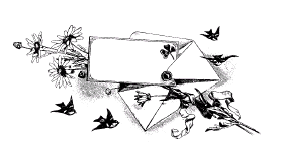
You must enable Javascript in your browser.















